As we all know, due to the current global health crisis, most of us are either unable to (or don’t want to) go out to our favorite places–even though a lot of us now have some free time to do so. Which is why the Art Docent Program blog is taking you on an art-historical journey to some of your favorite places this summer! Join us as we look at art focused on places like the beach, the theater, and other places we can’t all make it to at this time.
Our non-bummer artistic summer is in full swing here on the blog, and you’re invited to join us for the (virtual) ride! Get your sneakers on, we’re going to go watch some sports!
Baseball Scene, Beatty and Votteler, 1880-1900
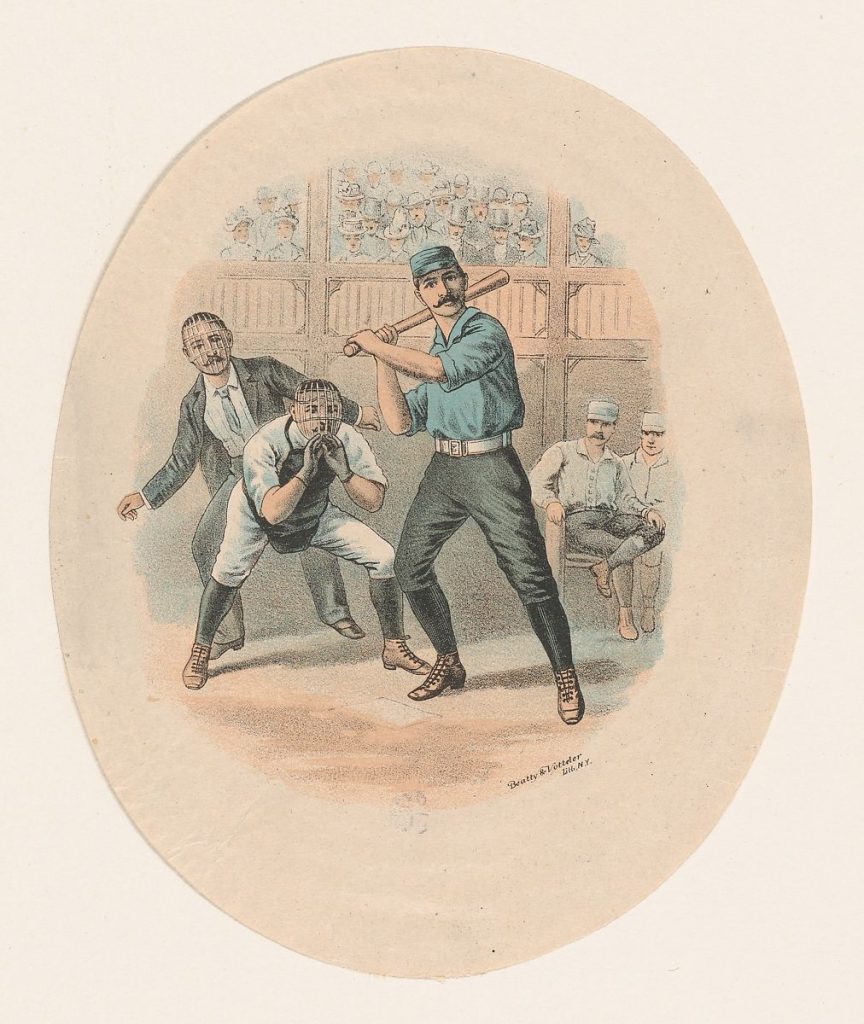
We all miss the national pastime, and this Victorian-era depiction of baseball is especially fun because of the subjects’ relatively fancy clothes. Look at the umpire–he’s even wearing a tie!
Both Members of This Club, George Bellows, 1909
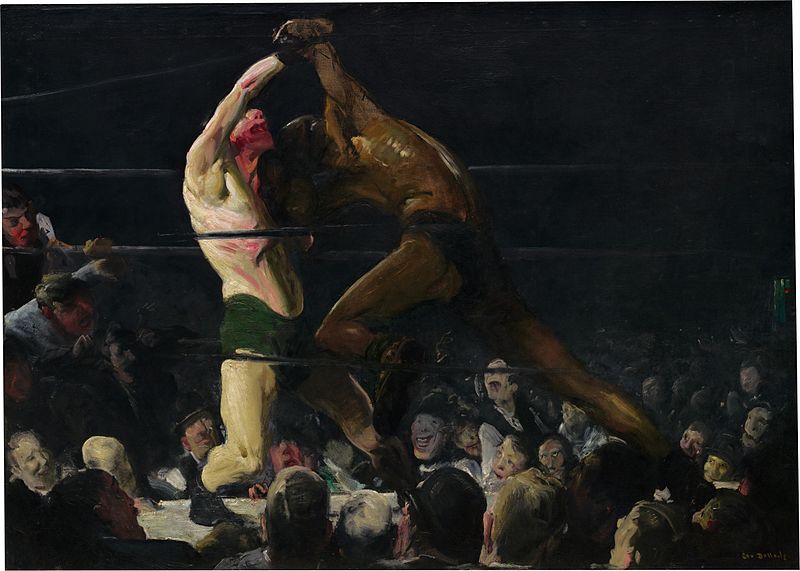
Boxing is a popular subject in the history of western art, especially for George Bellows, who’s known for his boxing paintings. Both Members of This Club not only puts the violence of the sport on display, but comments on the crowds who gather to watch (look at the man directly under the right boxer’s knee) and on racial attitudes at this time (as the Khan Academy points out, the title is ironic, since illicit boxing “clubs” were one of the few places where whites and African-Americans were on a supposedly equal footing in a segregated society). You can read more about the painting at the Khan Academy. Bellows is featured in our second and sixth-grade curriculum.
Mary Holland Bacher, Otto H. Bacher, 1891
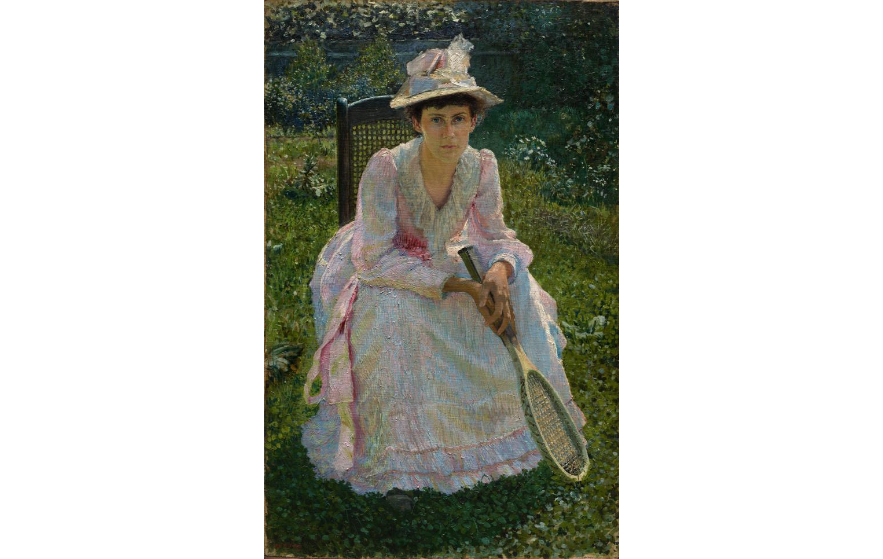
Sure, Mary Holland Bacher is not playing tennis here, but she does look like she’s questioning why she’s been pulled aside from playing tennis for this portrait. Someone must really love a sport in order to have their portrait painted with their equipment.
Hockey Players, Ernst Kirchner, c. 1934
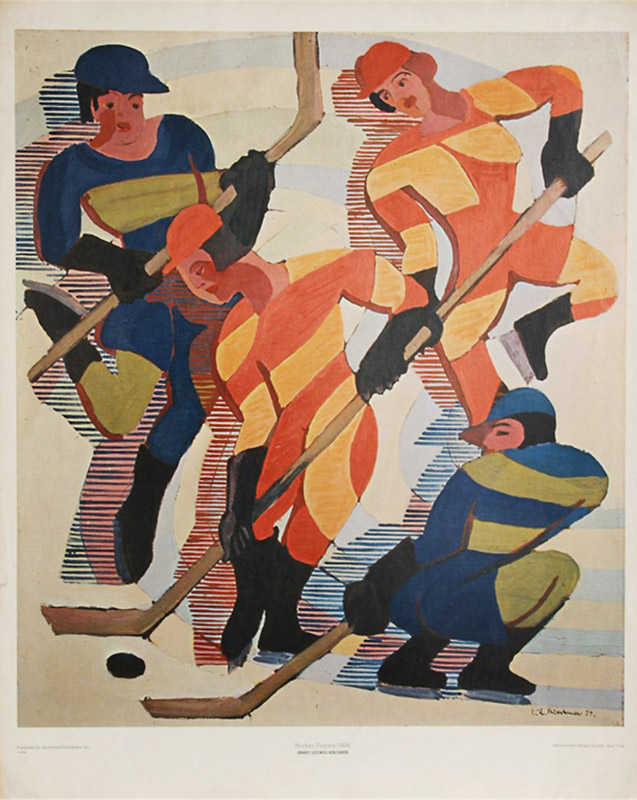
Kirchner’s hockey players look stylized and almost mechanic here, and his lines suggest quick movement. If you’ve ever seen a hockey game, you’ve likely been dazzled by how fast the players skate, and Kirchner’s painting captures their intense movements. Kirchner is featured in our second and sixth-grade curriculum.
Ball Player, Unknown Nopiloa Artist, 7th-10th century
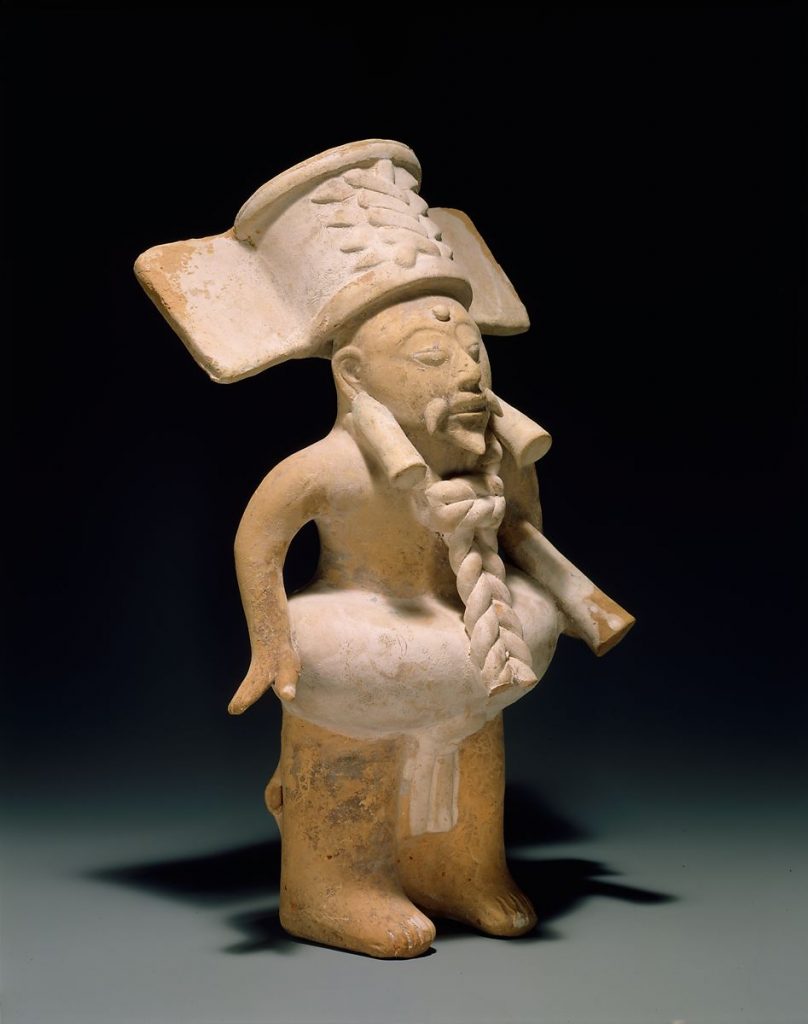
Oh, you think hockey is rough? Try the Mesoamerican ball game, where human sacrifice may have been a “frequent outcome,” according to the Met. Or, as the description for this sculpture notes, the ball game could have just been all sport. (We’re looking forward to more research on the subject, since the huge gap between “just sports” and “Thunderdome” in the current item descriptor leaves us wanting more information.) This sculpture of a ball player from around what is now the Veracruz area in Mexico features a “ballgame yoke” around the player’s waist “to protect him from the hard, solid rubber ball used in play,” according to the Met.
Games of Football Being Played by Nobles, Hishikawa Moronobu, c. 1615-1694
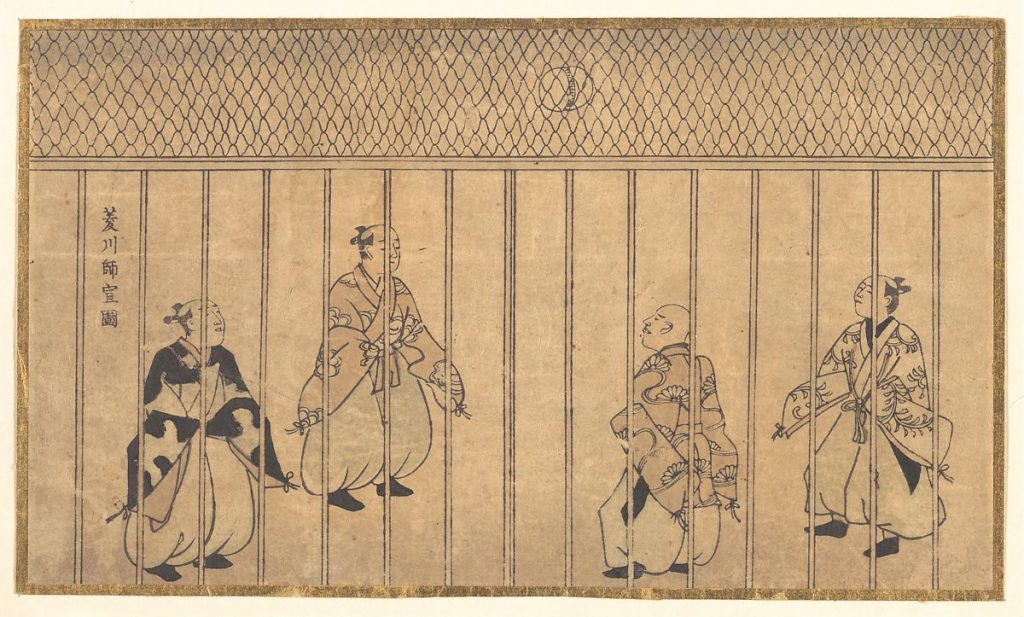
We’re impressed by how guys have clearly worn some fancy clothes to play ball in. The Met doesn’t provide a whole lot of background on this woodblock print, but the lasting power of sport shines through.
The Football Players, Henri Rousseau, c. 1908
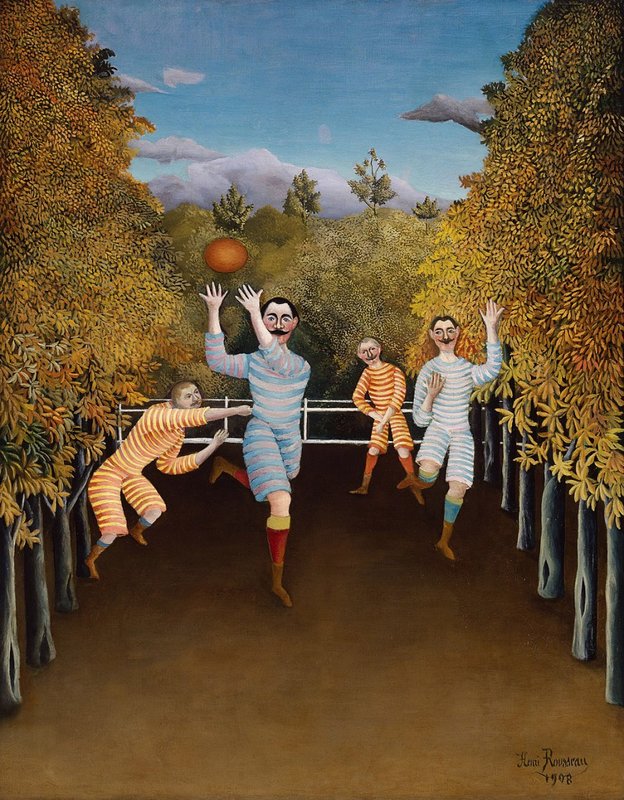
We have one thing to say about this painting: bring back old-timey uniforms. Rousseau is featured in our TK, kindergarten, first, second, and third-grade curriculum.
The Biglin Brothers Turning the Stake, Thomas Eakins, 1873
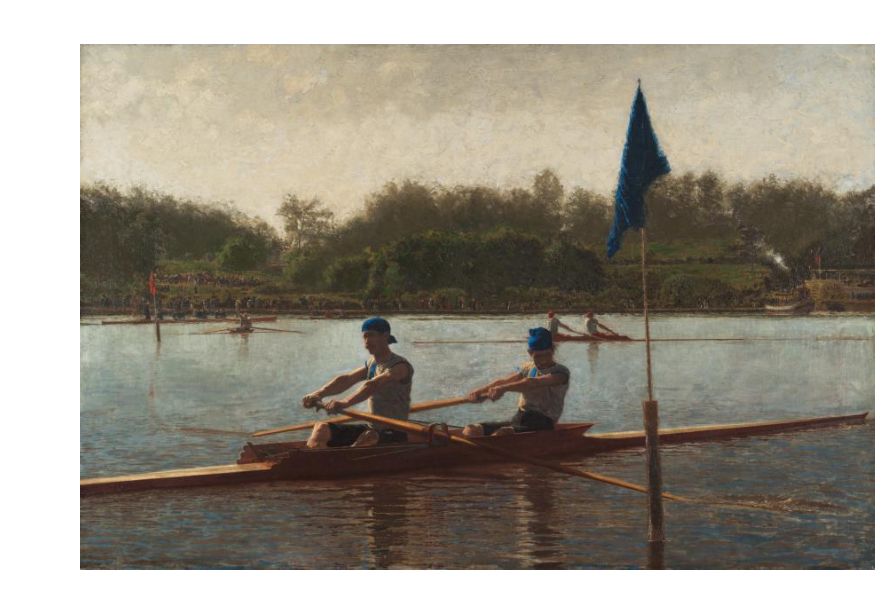
Stroke! In this painting, the Biglin brothers turn around the stake, which according to the Cleveland Museum of Art, is the halfway point in the race. And–spoiler–they ended up winning! Eakins is featured in our sixth-grade curriculum.
Check out Sartle for more sports in art history!
What do we do here at the Art Docent Program? Discover more about us and our curriculum here!
Want more fun art field trips? Check out our blog archives for more!







